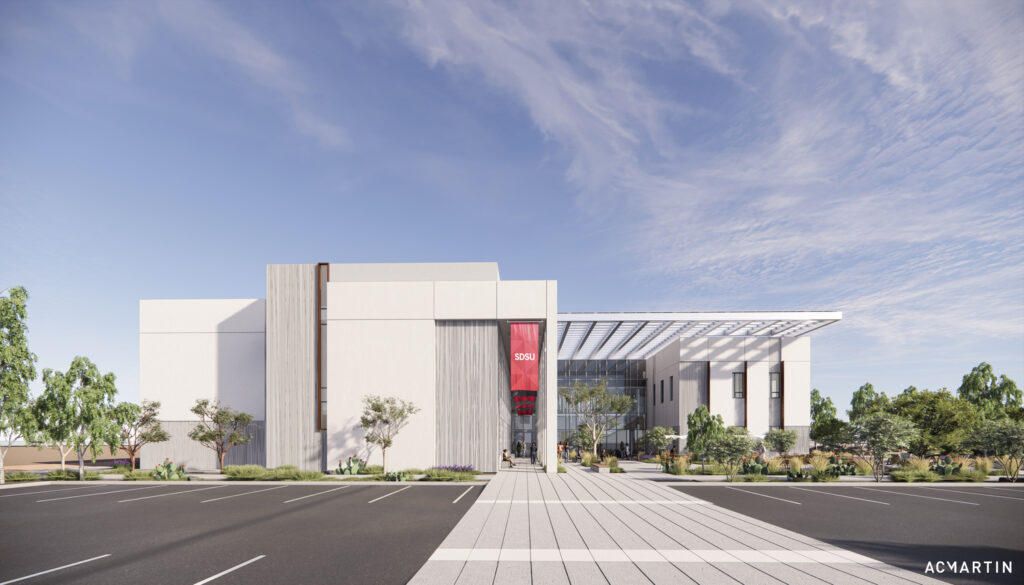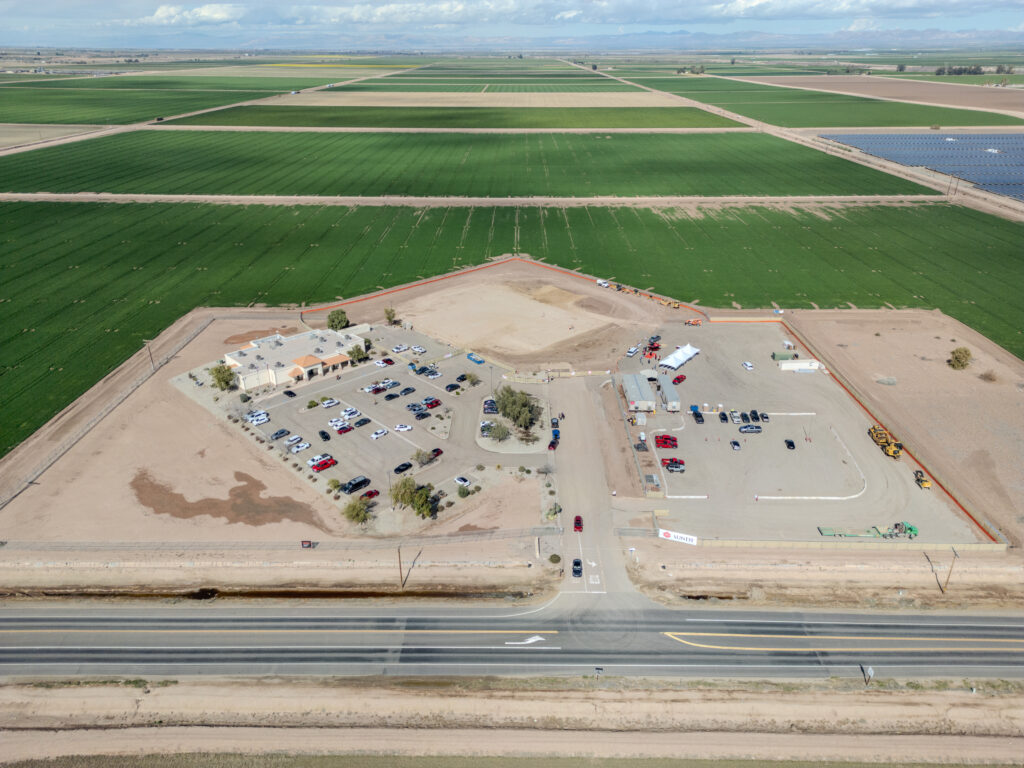Imperial County is tucked in the southeast corner of California, bordering Arizona and Mexico. With a population of just under 180,000, it’s the least populous county in Southern California, and is home to the Salton Sea, an unintentional byproduct of efforts to reroute the Colorado River in the 1920s.
Underneath the nearly dried-up Salton Sea is one of the world’s biggest deposits of lithium, critical in manufacturing batteries for electric vehicles. For this reason, Imperial Valley is now colloquially known as “Lithium Valley.”

Among the sprawling alfalfa fields in Brawley, San Diego State University (SDSU) has a single stucco building that accommodates nursing and environmental health programs. However, the need for more educational facilities for students in Imperial Valley is pressing. Sundt began preconstruction efforts in 2023 for the new SDSU Imperial Valley Sciences and Engineering Laboratories —a new STEM facility in Brawley that will offer students cutting-edge opportunities close to home.
Blank Slate
“With an $80 million grant, directly from the Governor’s office, the collaborative-design build project came to Sundt with a minimal program, offering us the unique opportunity to determine the entire vision for the project,” said Sundt Preconstruction Project Manager and Imperial Valley native Christopher Sullivan.
An expansion to the existing SDSU Imperial Valley Brawley building, this project will provide a STEM research and instructional facility with lower- and upper-division teaching labs. It will also include interdisciplinary lecture spaces, faculty and administrative offices, research and research services space, core facilities with modern instruments, and mechanical, electrical and telecom support spaces.
The project furthers the University’s plans to significantly expand educational, research and economic development opportunities in Imperial County, and represents the university’s continued commitment to transforming the Valley, ensuring local students can earn an education and obtain leadership positions while living in the region.
“SDSU gave Sundt the budget, asked us to help select an architect and came up with options of varying possibilities that met their needs. We priced out options for SDSU, allowing them to review the various scenarios to help them understand where and how far the dollars go—something made possible by collaborative design-build.”
– Chris Sullivan, Preconstruction Project Manager
In the end, 70% of the building includes laboratory spaces, significantly more than standard —and much more costly. “Although it’s a smaller building, it’s jam-packed with high-tech spaces that will allow students to study and work, which is what the university and community needs. It’s one of the most expensive buildings per square-foot the university system has built.”
And, unlike building in a densely populated city, the entire county has become invested. “Everyone knows about the project, and everyone is hopeful about how this will begin to transform the Valley,” said Chris. “We had multiple community outreach events, intent on incorporating as many voices as possible.”

Overcoming Challenges
Working on a 200-acre alfalfa field in the middle of the desert posed unique preconstruction challenges, including the potential for burrowing owls, no gravity sewer line or storm drain, and arsenic in the soil. The California Environmental Quality Act requires environmental impacts to be as small as possible. The preconstruction team planned how to humanely relocate the owls close by, minimizing disruption to their natural habitat, and removed over seven feet of soil under the new building and brought in new conforming soil.
The team also developed a new forced main sewer system that pumps over two miles to connect to the existing Brawley sewer system. Additionally, they designed and built vegetative swales that will retain storm water runoff, which in turn provides the water needed to support a landscaped area that will be enjoyed by the campus community. The team worked closely with a local farmer to coordinate crop growing times and field irrigation so they could build without disturbing the growth of the alfalfa.
To meet the demands of a hard deadline and the challenge of building in the desert with limited resources, the team focused on “speed and durability,” Chris explained. “We did a deep dive analysis on what materials would create the most durable building, but still meet the budget and the project goals. In the end, we landed on tilt-up concrete panels, due to the speed at which we can put them up coupled with their ability to last.”
The most unique element of the preconstruction process, however, was the trust SDSU put in Sundt to help manage the budget and design a building that will serve the community and offer economic prosperity. “I’ve never worked on a project with that possibility, but the client recognized that Sundt could rise to the occasion,” said Chris. “I was born and raised in the area, and I can’t wait to see the building in action.”
The SDSU Imperial Valley Brawley Sciences and Engineering Laboratories building broke ground during a ceremony on February 9, 2024, and is slated to open in fall 2025.
Learn more about Sundt’s work in California.